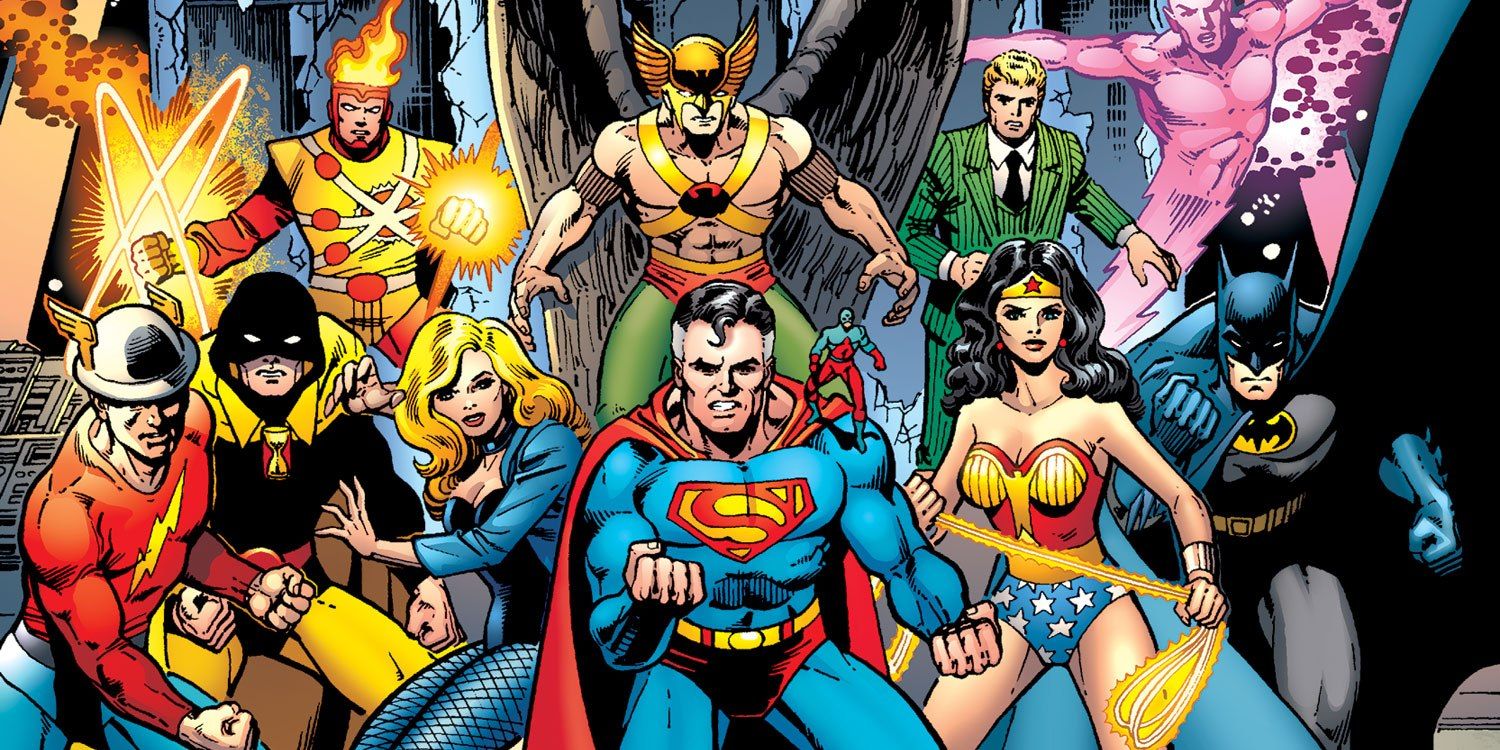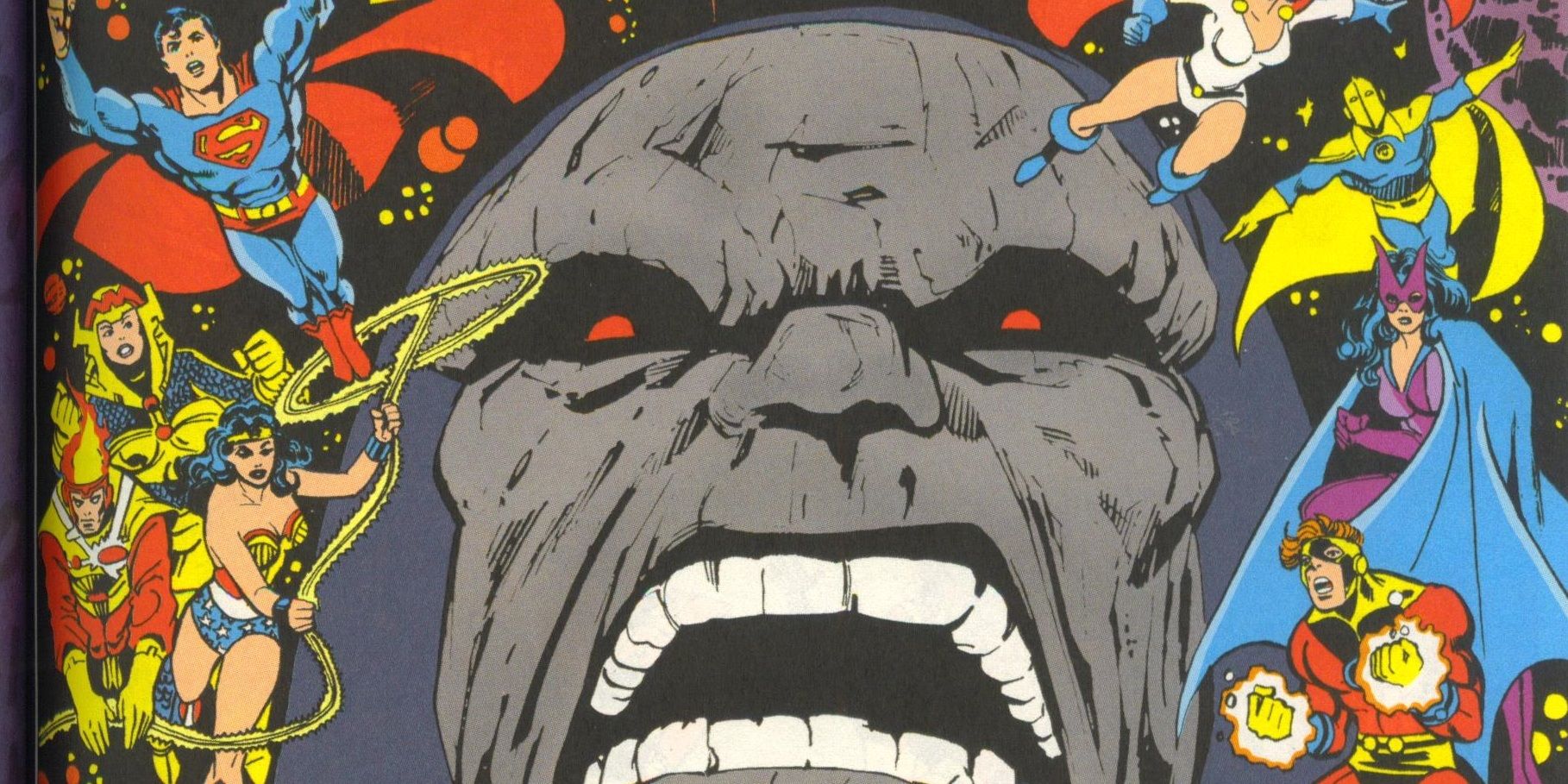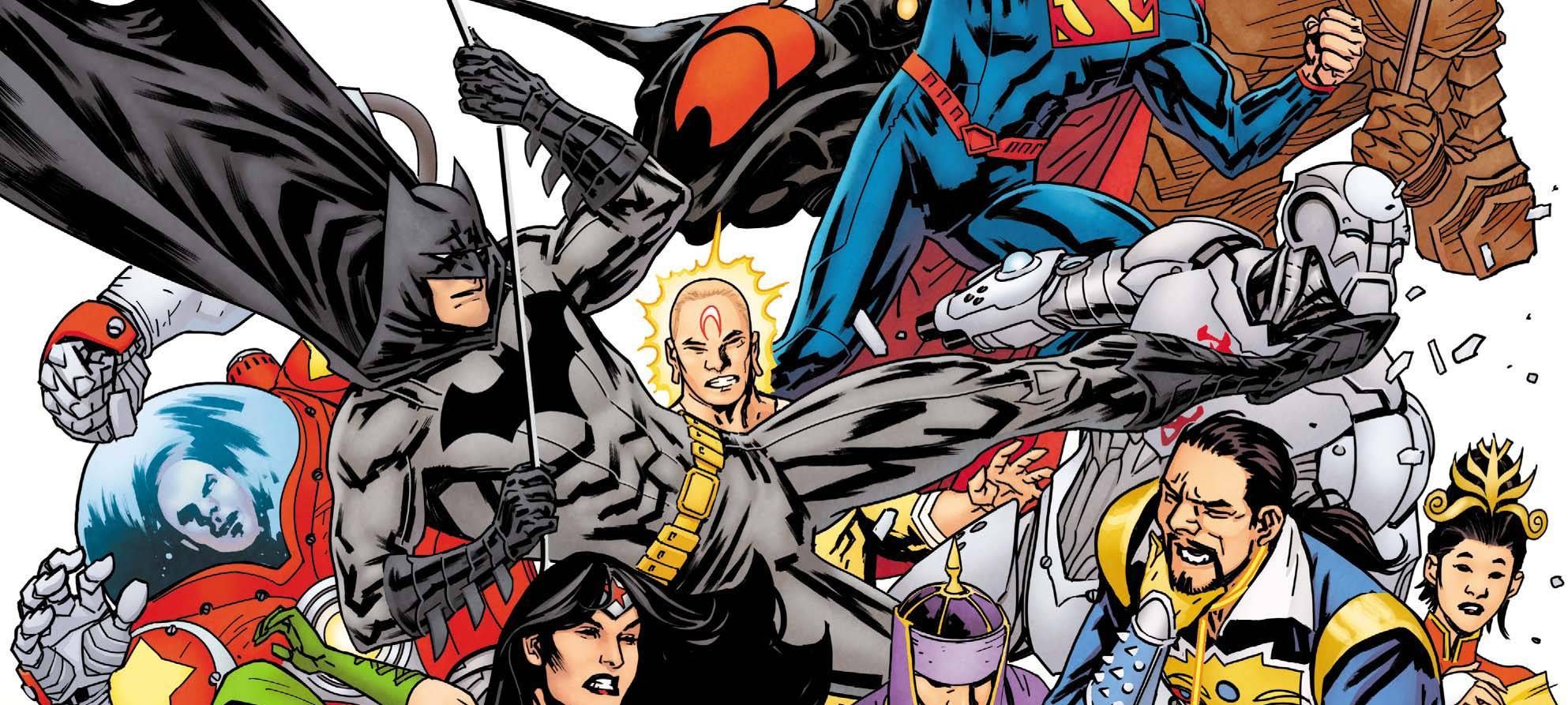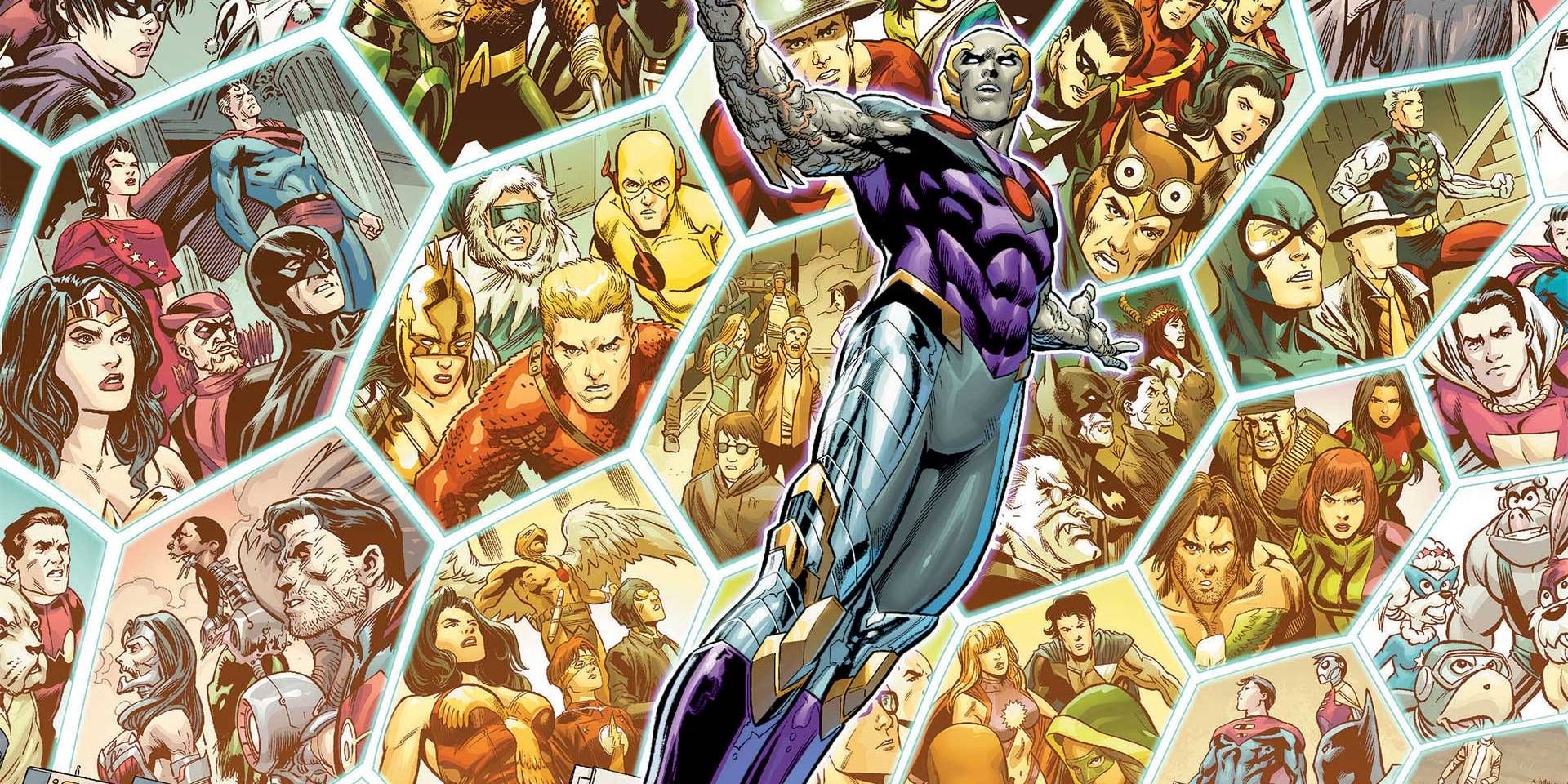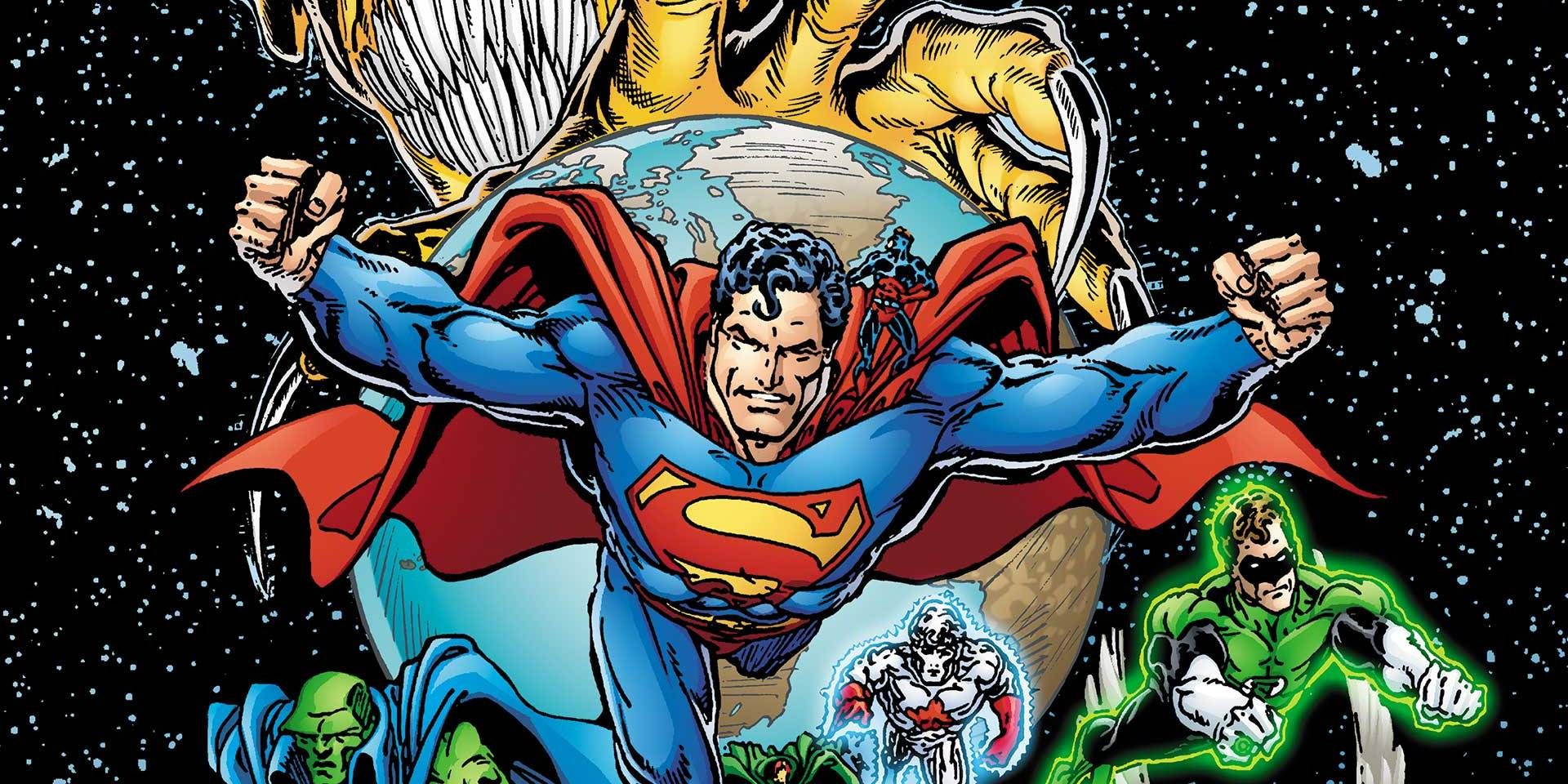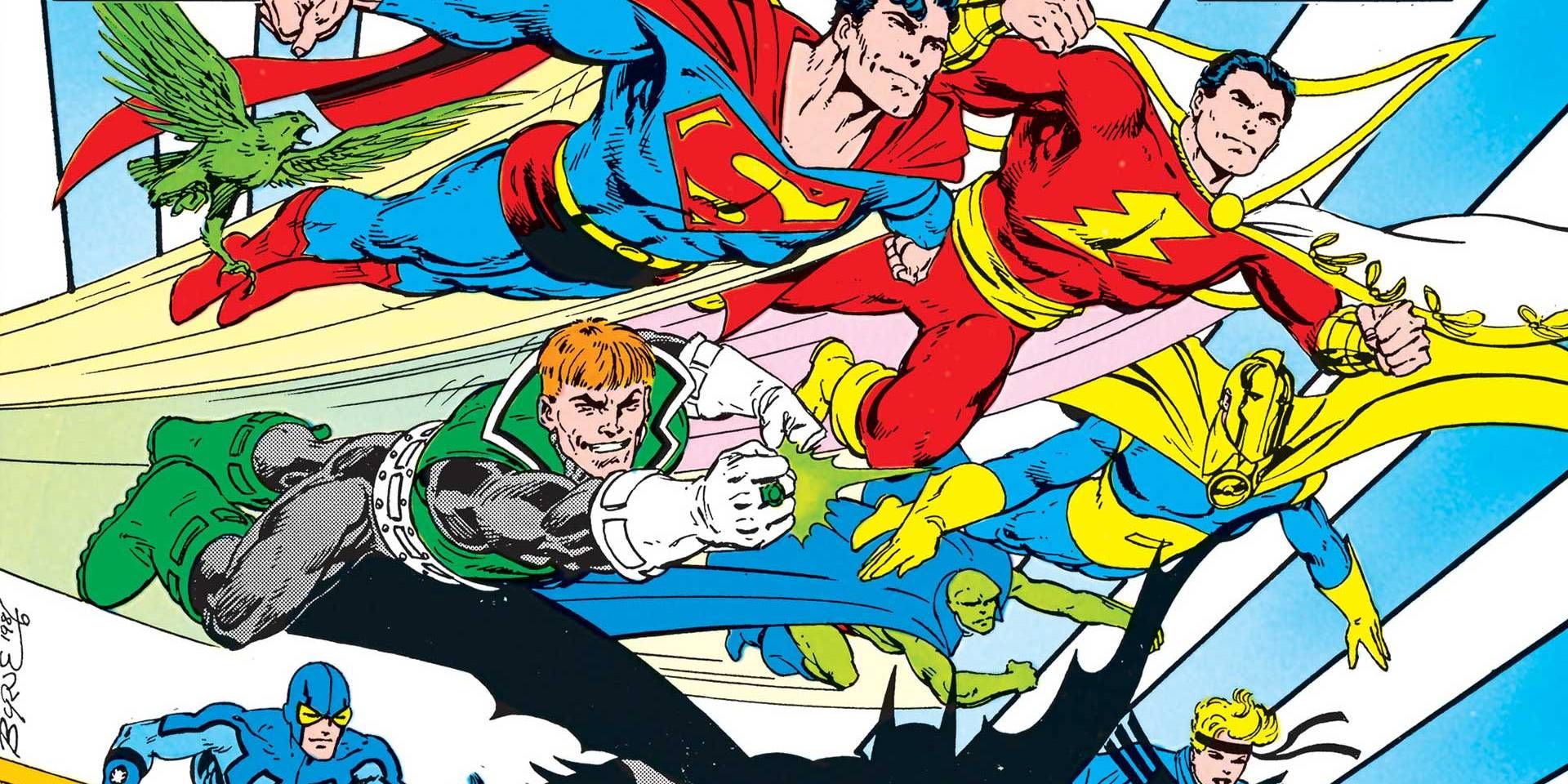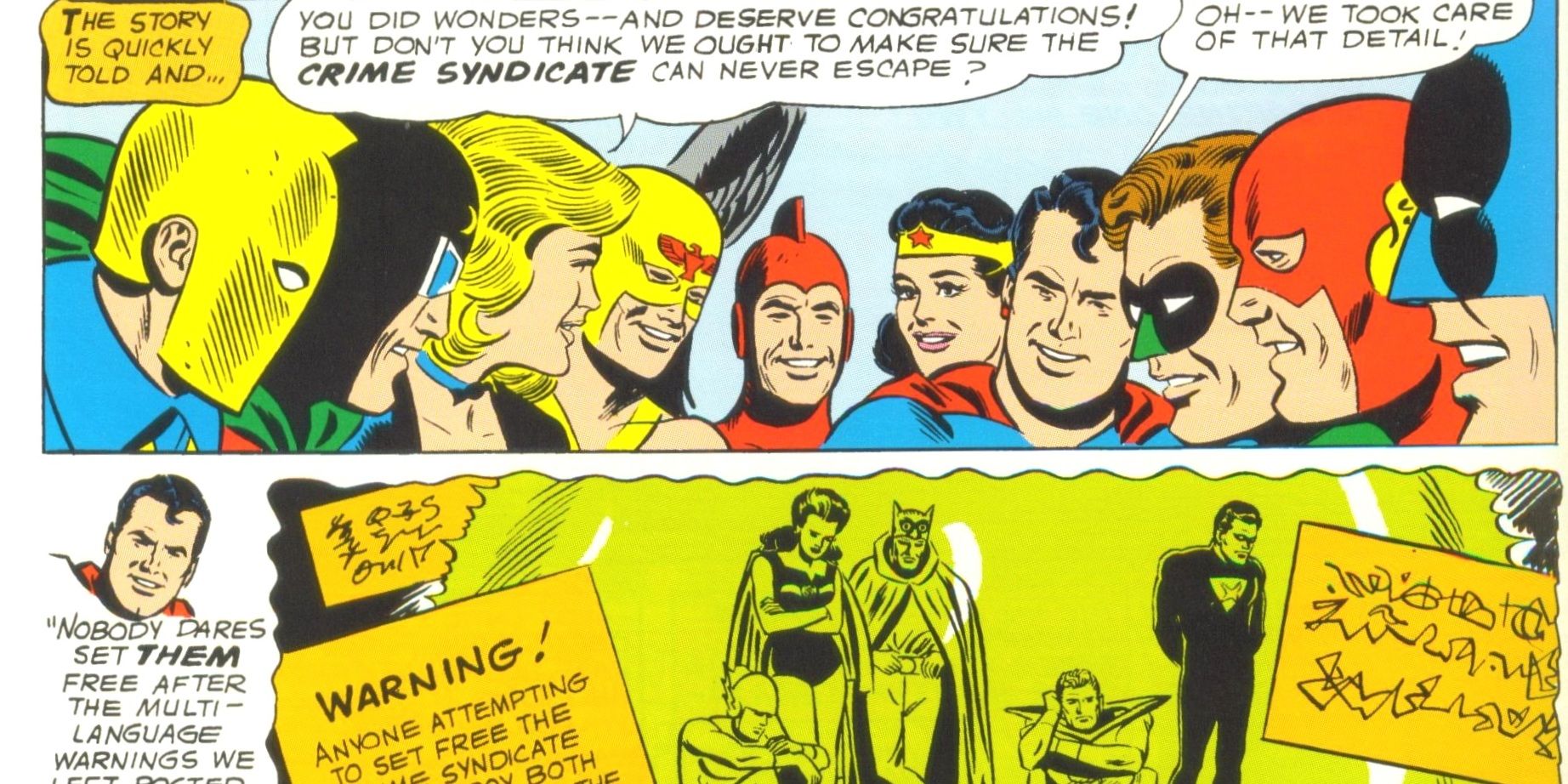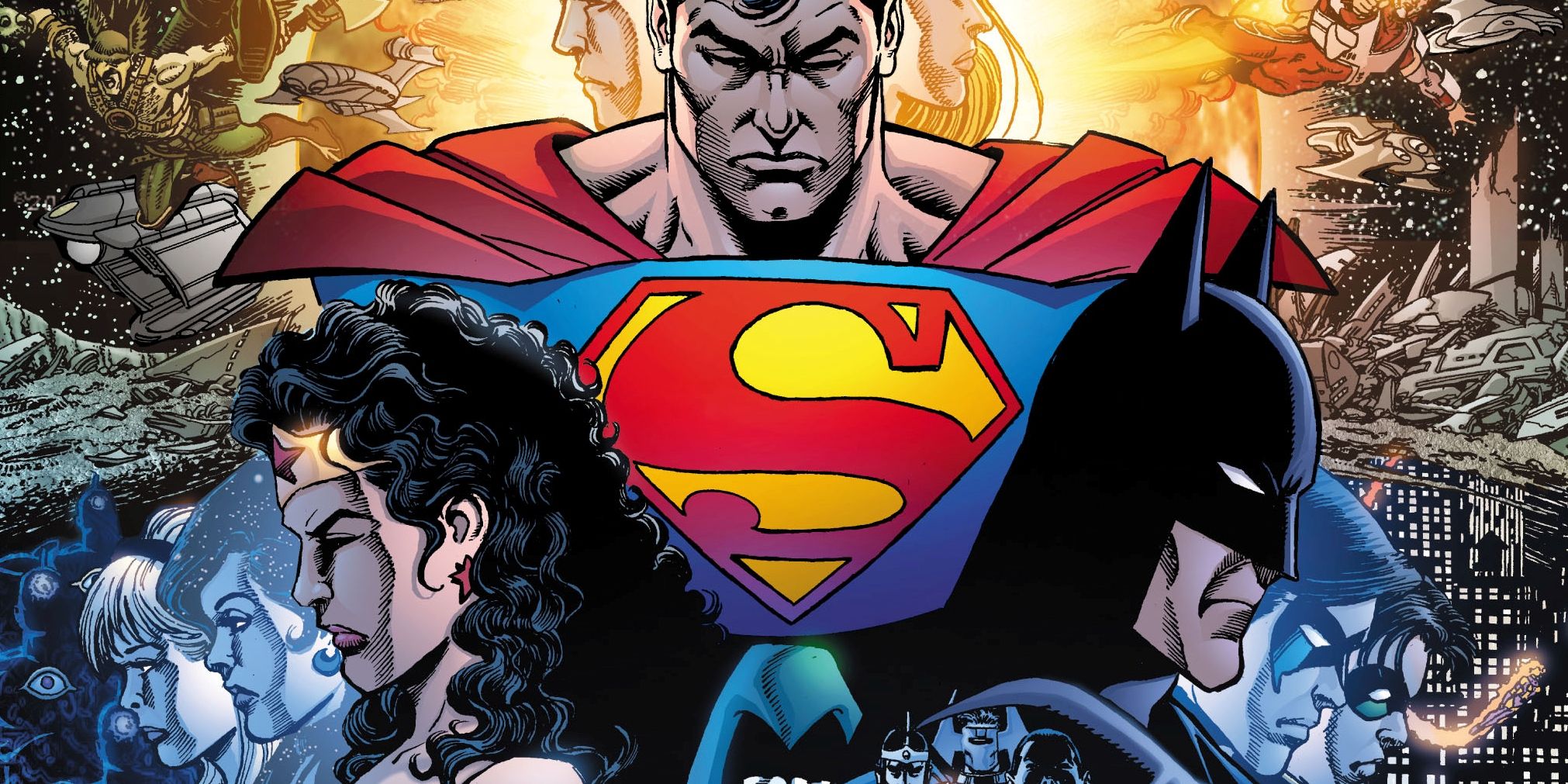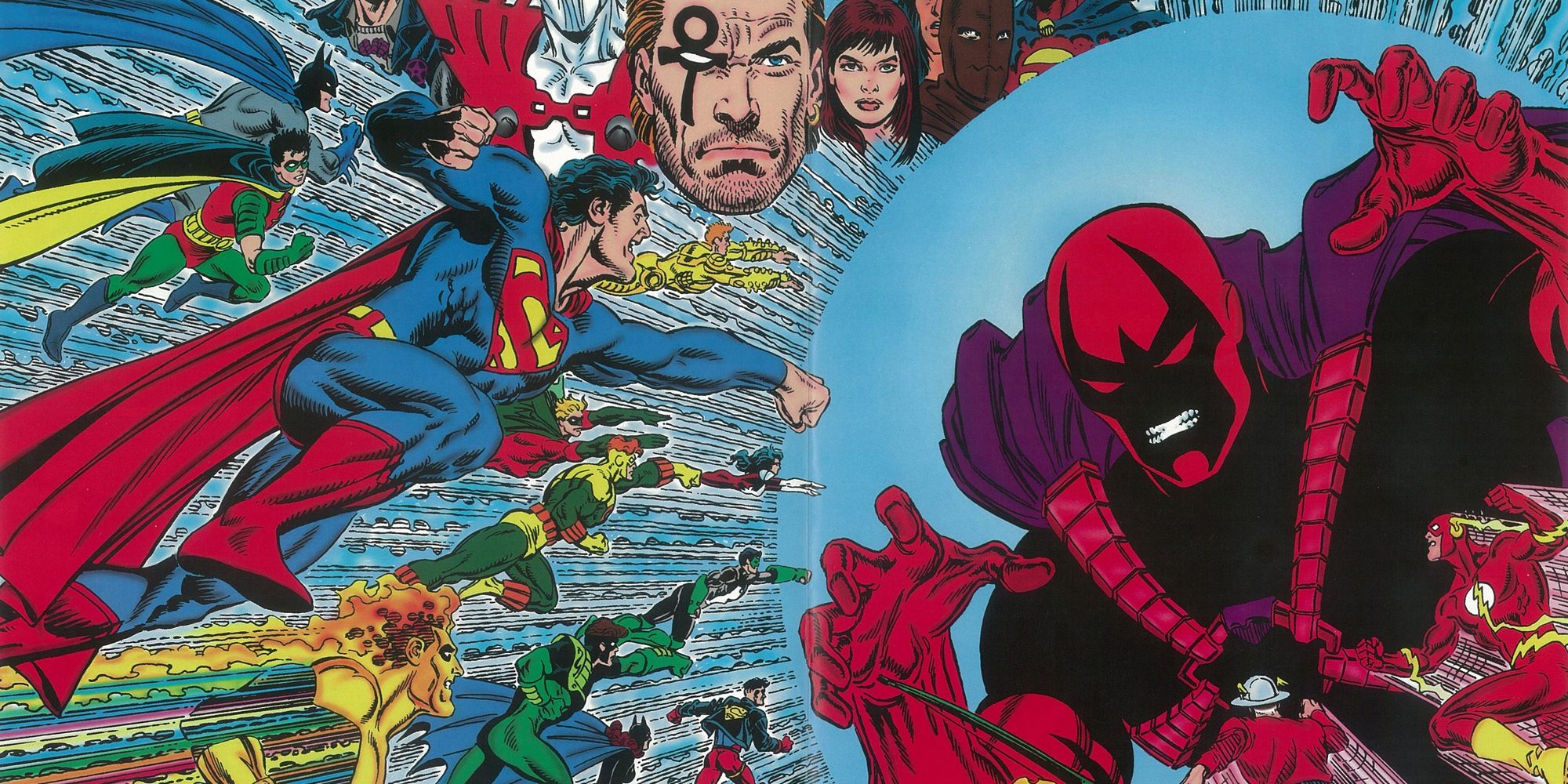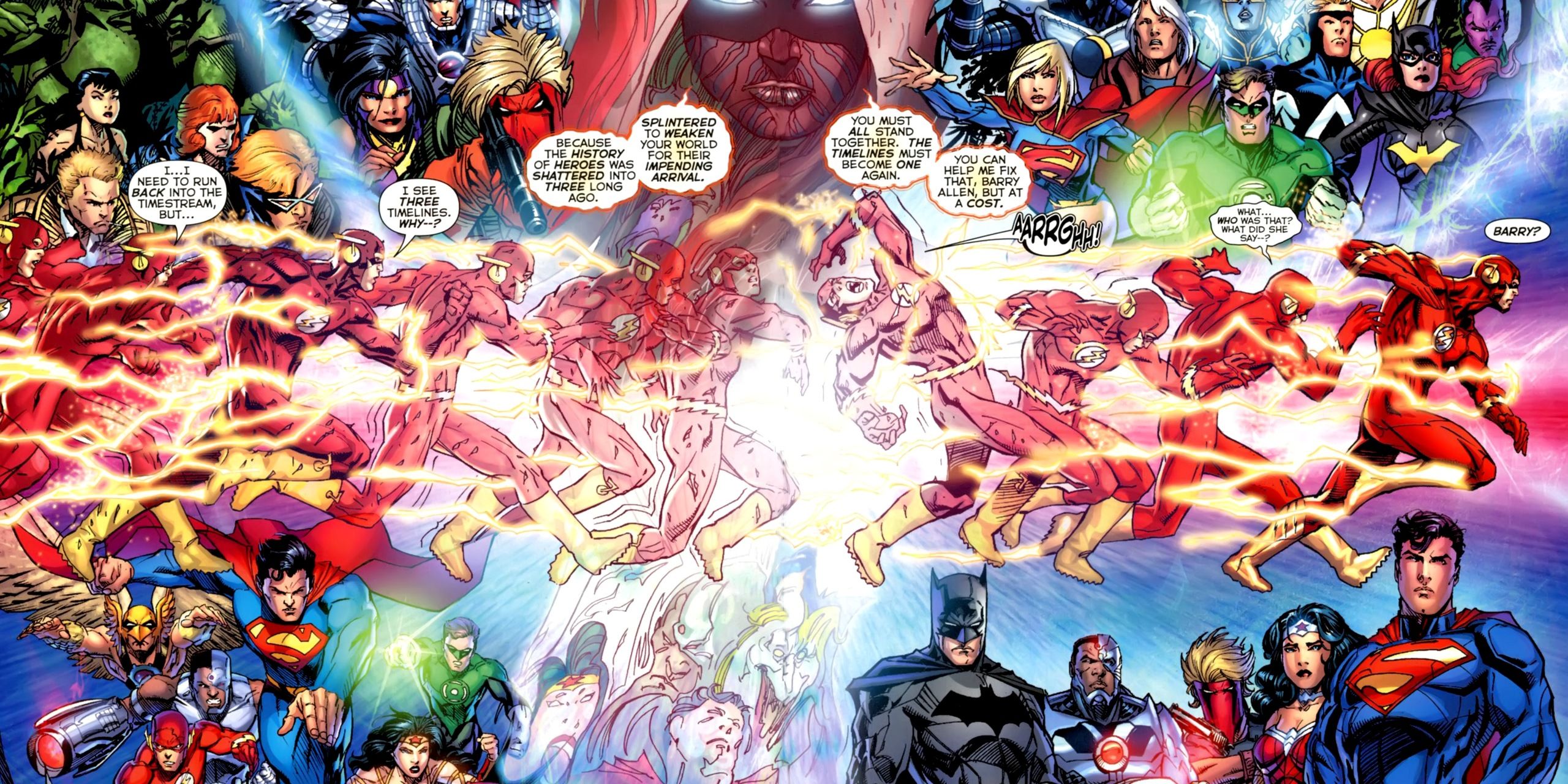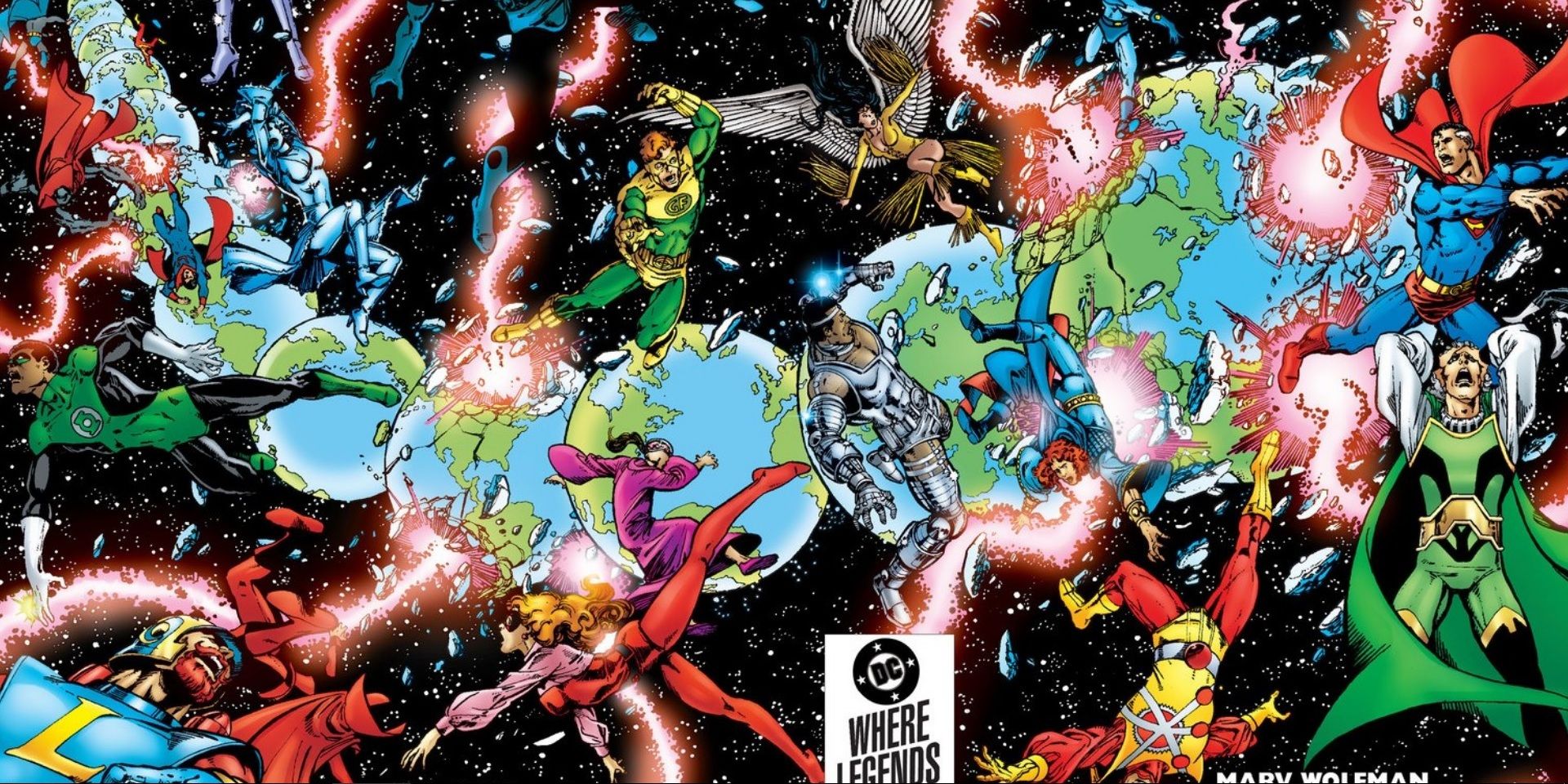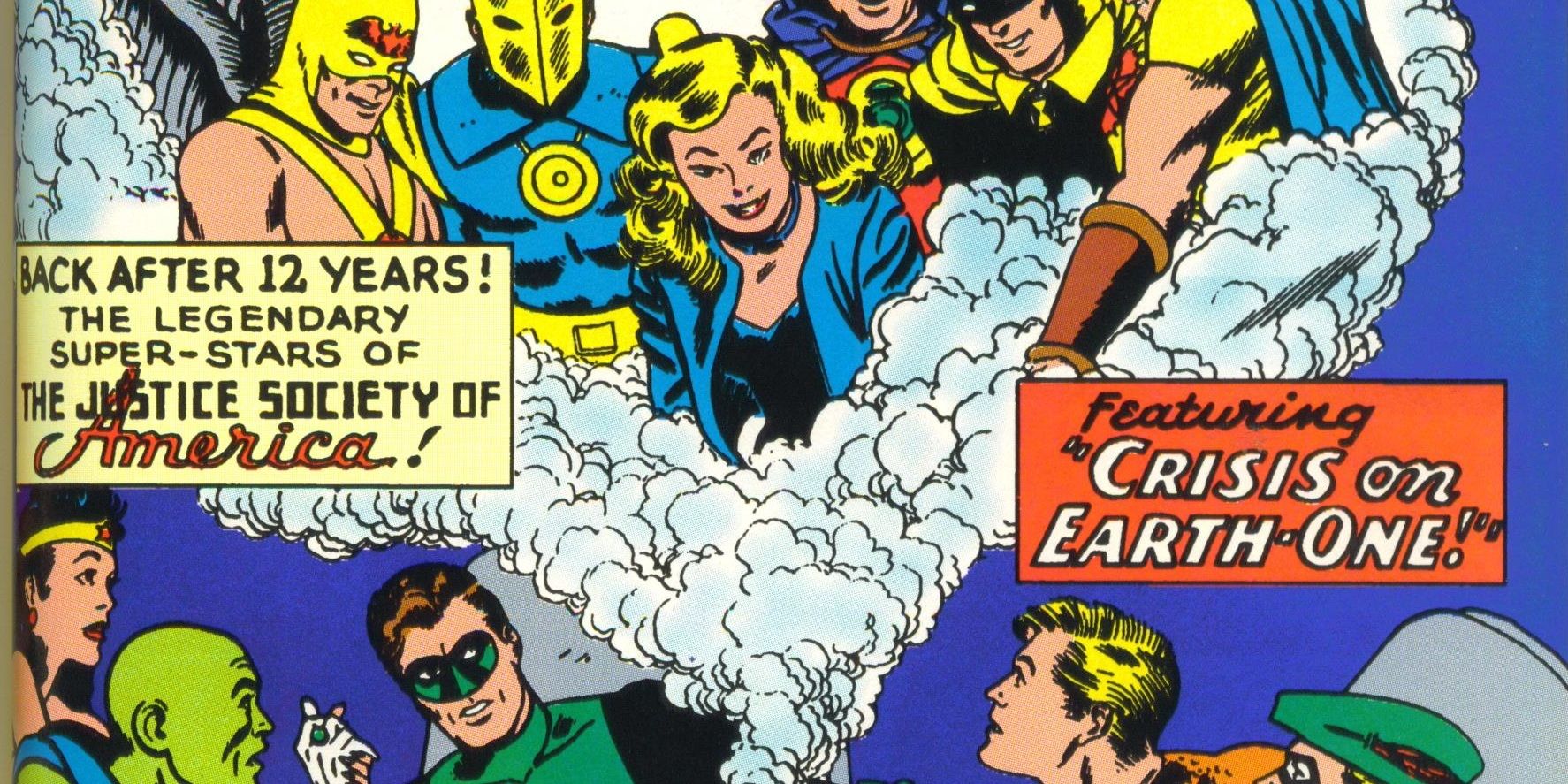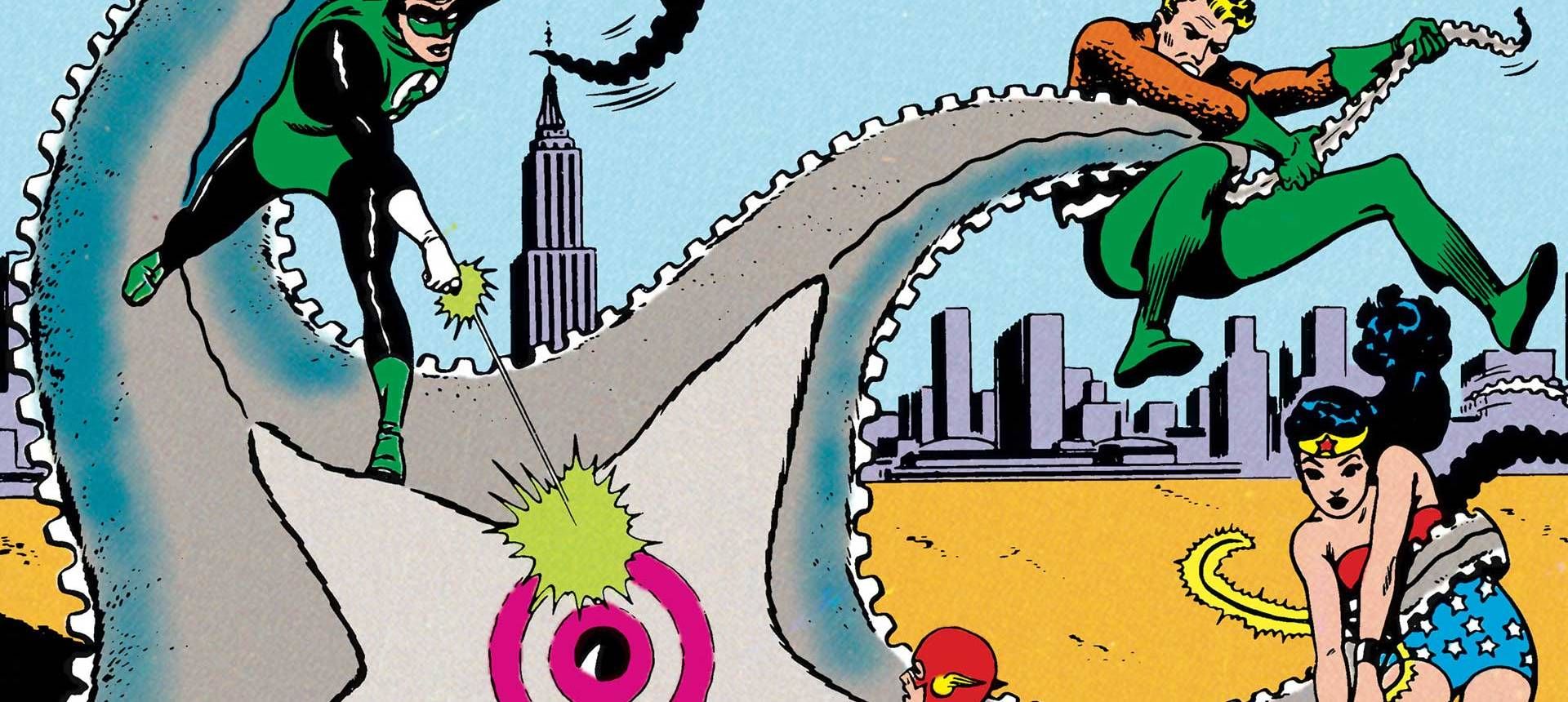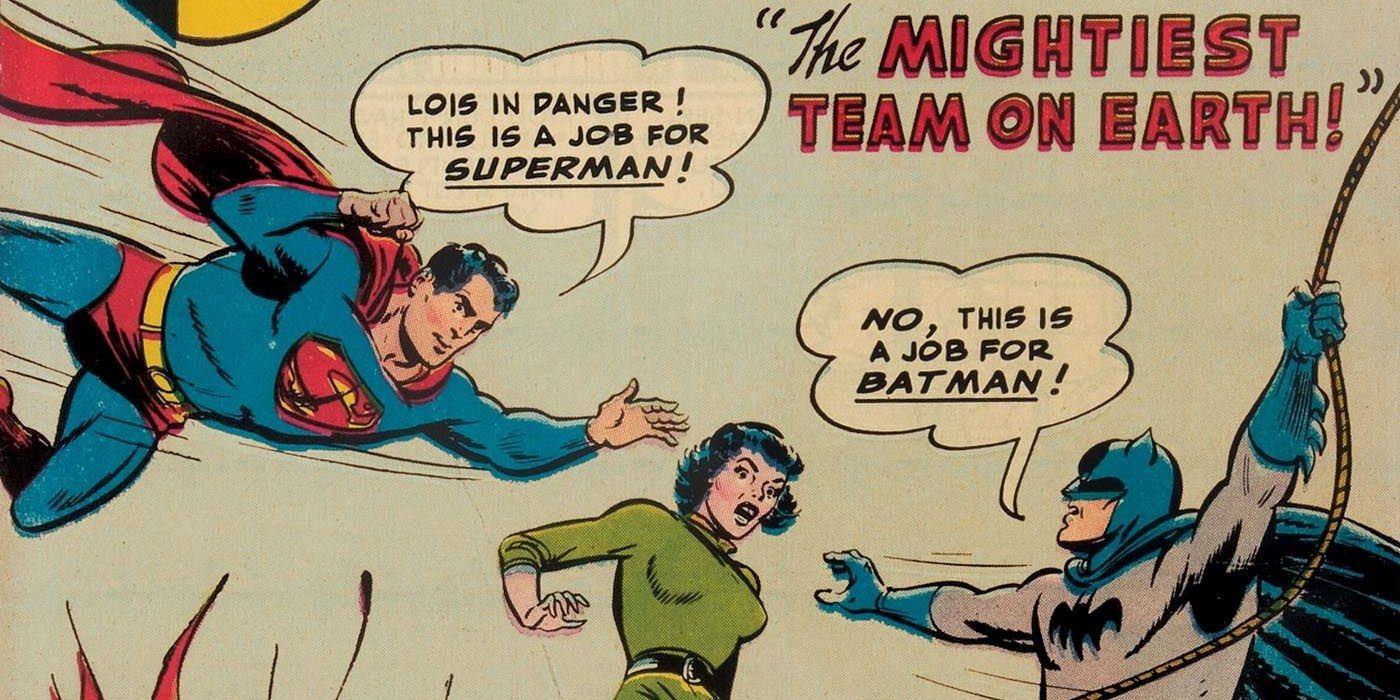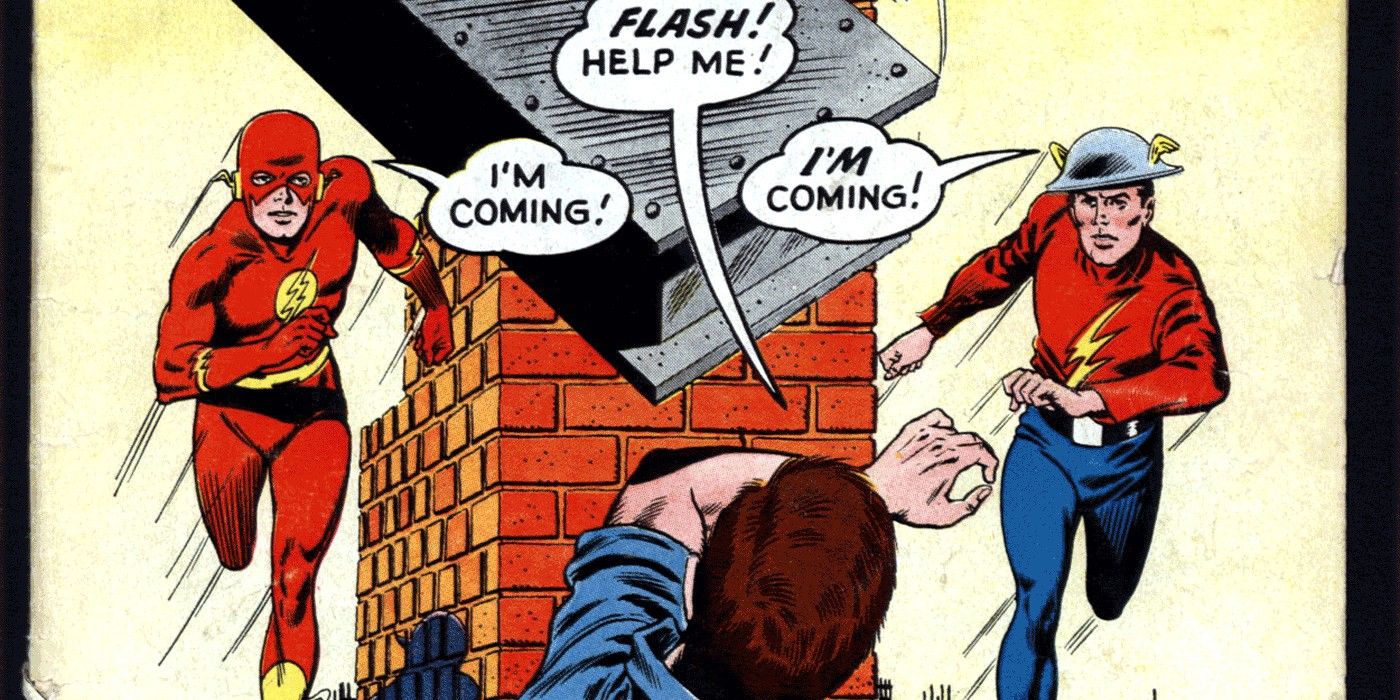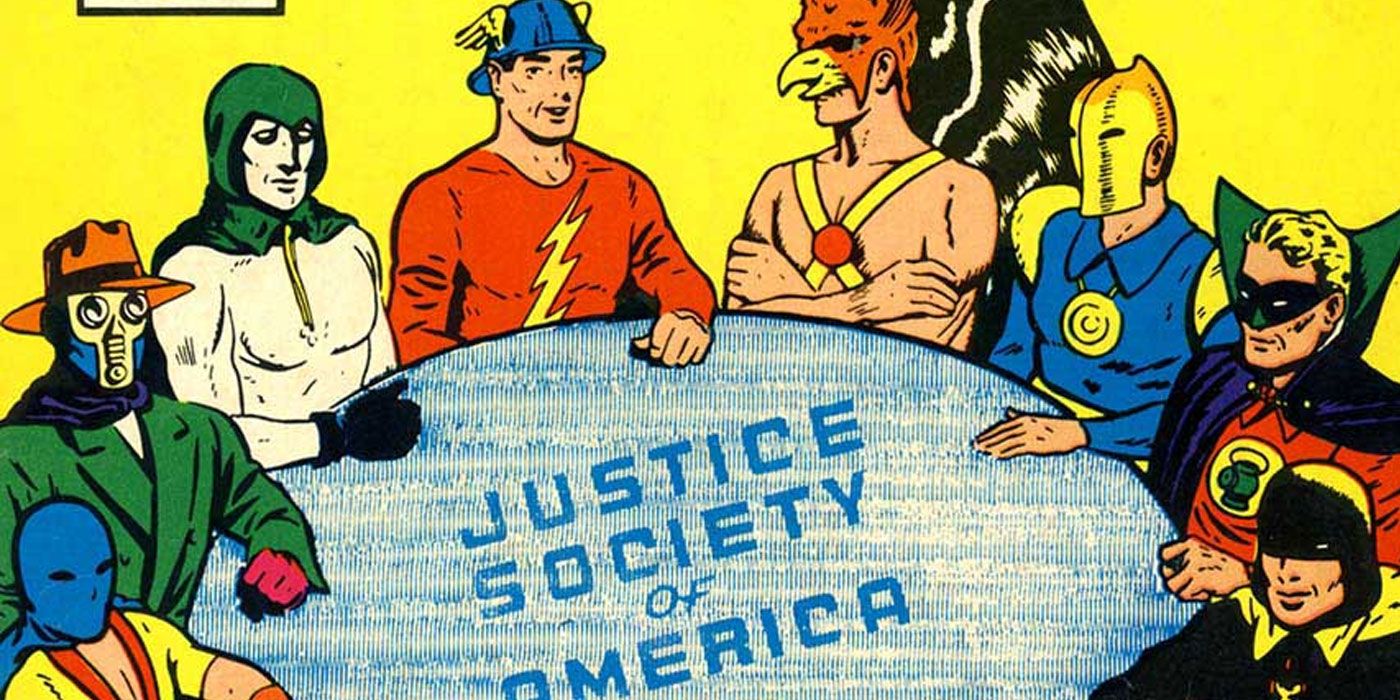The CW's various DC Comics shows have been teaming up ever since the first "Arrow"/"Flash" crossover in 2014. Indeed, those shows brought in enough DC characters to spin off "Legends of Tomorrow." With "Supergirl" now part of The CW, all four sets of heroes will come together in December to face an ultra-powerful threat big enough to warrant coverage across three series.
RELATED: The 15 Weirdest Crossovers in Comic Book History
This televisual experience continues a proud tradition of DC team-ups and crossovers, which have been going on strong in the comics for many years, and is mirrored in the comics in DC's latest crossover event, Justice League vs. Suicide Squad. With that legacy in mind, we're counting down the publisher's 15 most important crossovers, from the early years of the Golden Age right up to the present.
15 Crisis On New Genesis (1980)
Darkseid has been the DC Universe's ultimate bad guy for about 30 years now, but in 1980, he and the rest of the Fourth World were still somewhat esoteric. Only after Jack Kirby had left DC did his creations interact significantly with the other superhero books. Writer Gerry Conway used Darkseid early in "Secret Society of Super-Villains," and also wrote a "New Gods" revival drawn by Don Newton. When Conway wrote the 1980 Justice League/Justice Society team-up (pencilled by Dick Dillin and George Pérez), he picked up some of the latter's plot threads, with an exiled Darkseid plotting to move Apokolips into the dimensional space occupied by Earth-Two.
Full of heavy hitters (including Leaguers Superman, Batman, Green Lantern and Firestorm; Justice Socialites Wonder Woman, Doctor Fate, the Huntress and Power Girl; and New Gods Orion, Metron, Highfather, Big Barda and Mister Miracle), it was the first time DC's biggest super-teams had gone to the Fourth World, and it set a high standard. It was also George Pérez's first JLA/JSA team-up, foreshadowing a career spent drawing crowds.
14 The Final Days of Superman (2016)
Superheroes taking back their costumed identities after a leave of absence is hardly unusual. Heck, sometimes it's even expected. Regardless, in all our years of reading superhero comics, we haven't seen anything like the new-for-old Superman transition of 2016. This wasn't Hal Jordan or Steve Rogers moving back to the top of the chart; or even Kal-El/Clark Kent reviving in time to help Steel, Supergirl, the Eradicator and Superboy.
Instead, it was the Superman of a whole other reality stepping out of the shadows and taking over for the New 52 version, who, in a bit of brutal meta-commentary, succumbed to all the battering he'd endured from a series of crossovers and big events. While there are still some mysteries surrounding the death of New 52 Supes (who is the new Clark Kent? How are the Superwomen involved? Is that Ozymandias?), they can't get much weirder than just reinstalling the version from 1986-2011.
13 Convergence (2015)
When DC moved its offices across the country, it needed a way to produce two months' worth of comics without using a lot of its main creative teams; and "Convergence" was the result. This miniseries-plus-spinoffs explained that a boatload of outdated DC realities were still up and running, thanks to a very scary version of Brainiac and his Silver Surfer-like flunky Tellos. The event itself pitted characters from different realms against one another, while trying to tell a confusing story with cosmic consequences.
What makes "Convergence" important is its role in DC's larger management of its shared superhero universe. Spinning out of "Convergence" were the "Titans Hunt" miniseries (telling the secret history of the New 52 characters who should have been the original Teen Titans) and "Lois & Clark" (which revealed what had happened to the pre-"Flashpoint" Superman and Lois Lane). For anyone trying to make sense of the Rebirthed "Titans" or Superman titles, those miniseries are essential; and they wouldn't have happened without "Convergence." Moreover, like "Final Days of Superman," we suspect the mechanics of "Convergence" may come back to haunt the Rebirthed DC Universe.
12 Invasion (1989)
This late-1988 miniseries is remembered fondly enough that it's the inspiration for the aforementioned CW crossover event. Written by Keith Giffen and Bill Mantlo, with art by Giffen, Todd McFarlane and Bart Sears, it involved the alien Dominators leading a planet-leveling, multi-species armada (most of whom would end up fighting the Legion of Super-Heroes in a thousand years) against the Earth.
Having discovered that many of Earth's superheroes could trace their powers back to a "metagene," the Dominators wanted to co-opt Earth's metahuman population. Instead, a rogue Dominator's experiment resulted in a "gene-bomb," which disabled the majority of super-folk. Don't worry, it was just temporary. Along the way, Superman fought a group of Daxamites (who later joined the good guys), Captain Atom became the General Patton of Earth's super-people, and Maxwell Lord discovered he could control people's minds. It was a rollicking, carnage-stuffed adventure that made the metagene concept very popular.
11 Legends (1987)
After spending all of 1985 cleaning house, DC's 1986 crossover (written by John Ostrander and Len Wein, pencilled by John Byrne and inked by Karl Kesel) was something of a housewarming party. It brought together heroes who used to be on different parallel worlds, like Captain Marvel, Doctor Fate and Blue Beetle; it showcased other newcomers like Guy Gardner, Wally "Flash" West and the rebooted Wonder Woman; and it introduced new versions of the Suicide Squad and Justice League. It was also the first DC Big Event to feature Darkseid, who was later part of 1997's "Genesis" and 2008's "Final Crisis."
See, Darkseid told the Phantom Stranger that Earth's general public would be easy to turn against its superhuman protectors, so he sent lackey Glorious Godfrey to Earth as a sort of sinister spin doctor. Godfrey's plotting put an end to the Detroit edition of the Justice League, framed Captain Marvel for murder and sicced a horde of Apokoliptian robotic war-dogs on Washington, D.C. When all the dust settled, readers came away with a good sense of how the newly-streamlined DC Universe was going to work; and for the most part, it worked pretty well.
10 Crisis On Earth Three (1964)
The second Justice League/Justice Society team-up introduced the evil super-group called the Crime Syndicate. However, "Crisis On Earth-Three" was also the first JLA/JSA joint venture to involve a totally new parallel Earth (as opposed to the Silver Age Earth-One or the Golden Age Earth-Two). On this mirror world, England gained its independence from America, Benedict Arnold was a hero and the Crime Syndicate's Ultraman was an Earth astronaut whose superpowers came from Kryptonite.
Accordingly, DC's infinite Multiverse began to open up to all sorts of possibilities, from Earths featuring characters from other companies (like Earth-S, home to Fawcett Comics' Marvel Family) to Earths populated by funny-animal characters (like Captain Carrot's Earth-C). The JLA/JSA team-ups often involved these other parallel Earths, as when the two teams (and the resident superheroes known as the Freedom Fighters) liberated the Nazi-controlled Earth-X. The Crime Syndicate also returned in a number of stories, from an arc in "Secret Society of Super-Villains" to Grant Morrison and Frank Quitely's "JLA: Earth 2" graphic novel; as well as appearances in "JLA/Avengers," Kurt Busiek and Mark Bagley's year-long "Trinity" miniseries and 2013's "Forever Evil" miniseries (from writer Geoff Johns and artist David Finch).
9 Infinite Crisis (2005 - 2006)
Written by Geoff Johns and drawn by Phil Jimenez (with contributions from George Pérez and Jerry Ordway), "Infinite Crisis" was the core of a years-long "Crisis Cycle." "Identity Crisis" from 2004 revealed longstanding fractures among the original Justice Leaguers, which led to Batman's creation of an uncontrollable artificial intelligence. 2005's "Countdown to Infinite Crisis" led into a series of miniseries and story arcs: "The OMAC Project," "The Rann/Thanagar War," "Day of Vengeance," "Villains United" and "Sacrifice" -- each of which distracted whole communities of super-people, from the JLA to the Green Lantern Corps and the magic-using community.
"Infinite Crisis" then saw a couple of parallel-universe Supermen (including the disgruntled-fan mouthpiece Superboy-Prime) try to bring back the Multiverse in a misguided attempt to fix the main DC-Earth. They succeeded... sort of. The new Multiverse was just 52 parallel worlds deep; the main DC-Earth got its timeline tweaked in small but meaningful ways; and Superman, Batman and Wonder Woman took a year off to recuperate. After all that buildup, readers were probably eager for a break as well.
8 Zero Hour: Crisis In Time (1994)
In the mid-to-late '80s, DC presented a series of rolling relaunches, starting in 1986 with Superman and Wonder Woman and continuing through reboots both major (Captain Atom, Hawkman) and minor ("Batman: Year One"). Collectively, this produced a patchwork of continuity, which, by 1994, had gotten a little unwieldy. Therefore, "Zero Hour" did two important things: it tweaked the timeline -- especially with regard to Hawkman and the Legion of Super-Heroes -- to make them allegedly more new-reader friendly; and it devoted an entire month to "zero issues" recapping each character's origins.
"Zero Hour" also marked the first crossover to feature both the genuine Superman and Batman since they had each gotten benched by the "Death of Superman" and "Knightfall" events. Generally it represented a soft reboot of the superhero line, and while it didn't launch many successful books ("Starman" was a hit; "Primal Force" and "Book of Fate," not so much), it did help boost the more familiar titles.
7 Flashpoint (2011)
Depending on what happens with "Rebirth's" mechanics, the Big Event which introduced the New 52 may be even more important than it appeared initially. In 2011, "Flashpoint" was unavoidable. It dominated the entire summer, with various miniseries and specials devoted to the details of its nightmarish altered timeline. The main miniseries only crossed over with two titles, "The Flash" (which led into "Flashpoint" and then ended) and "Booster Gold." However, the repercussions affected every DC book, each of which wrapped up its storylines by August so that the New 52 could start everything over again in September. As with "Convergence," DC readers are still feeling the aftershocks today.
"Flashpoint" also has its own lingering mysteries, mainly around the enigmatic Pandora, who appeared in each of the New 52's first issues and eventually got her own short-lived series, before being blasted into oblivion in the "DC Rebirth" special. For a while, though, she was the person who guided Barry Allen as he wove the threads of Vertigo, WildStorm and main-line DC characters into a 52-title tapestry. You didn't need to understand "Flashpoint" to get into the New 52, and you might not need to understand it to appreciate all of "Rebirth's" goals; but in the summer of 2011, it got DC's readers ready for some big changes.
6 Crisis On Infinite Earths (1985 - 1986)
We know what you're thinking: "Crisis" is number 6? Yes, the Big Event which started it all -- which first reordered the infinite Multiverse into a singular Universe, and delivered on its promises of worlds living and dying -- doesn't crack this list's top five. Think of it this way, though: it's the highest-ranking Big Event and the mere rumor of its planning kicked off the Big-Event era, by prodding Marvel into producing 1984's "Secret Wars."
Spanning all of 1985 (or from December '84 to November '85 for the Direct Market), "Crisis" reached into every main-line DC title in one way or another, honoring the company's 50th anniversary and doing some cosmic housecleaning at the same time. DC's A-list team of Marv Wolfman and George Pérez designed "Crisis" to eat itself, by making DC readers realize that nothing was the same and then convincing them they didn't really care. That's a trick the best magician would envy.
5 Crisis On Earth-One (1963)
Indeed, there wouldn't be a litany of Crises without the one which started it all. While heroes from DC's Silver and Golden Ages had met a couple of times before, the Justice League meeting the Justice Society was the kind of unqualified fangasmic win-win DC readers never knew they wanted, and then couldn't live without. "Crisis On Earth-One" kicked off an annual tradition, which lasted for over 20 years.
During that time, the two groups brought back the Seven Soldiers of Victory, met the Marvel Family, teamed up with the Legion of Super-Heroes and battled evil everywhere from a locked-down JLA Satellite to the end of Time itself. While the "annual" part hasn't been true since the '80s, DC never really abandoned the tradition, even after the infinite Earths were gone. If the JSA has been a part of the main DC Universe, it's teamed up with the Justice League; and if, as expected, "Rebirth" brings the senior group back into the fold, you can bet the tradition will start up again.
4 Introducing The Justice League (1960)
Most of DC's 1959 target audience might not have appreciated what it meant for the publisher to field a "Justice League of America," but it was a clear sign of the superhero resurgence that the new versions of Flash and Green Lantern had begun. "JLA" put those revamped heroes together with perennial favorites Superman, Batman, Wonder Woman and Aquaman; and added the Martian Manhunter, a new-ish character who was pretty popular himself.
Although Superman and Batman had been teaming up regularly for a while, the sight of seven superheroes in one title was enough to make DC's advertisements gush "Just Imagine!" They weren't kidding. A few years later DC replicated the Justice League formula for "Teen Titans," and used the group to help bring back the Justice Society. "Justice League of America" was even such a hit that DC's crosstown rivals wanted a super-team of their own. Stan Lee and Jack Kirby created a comic almost entirely unlike the JLA, and the rest is history.
3 The Mightiest Team On Earth (1952)
The Superman/Batman team-ups actually began on the "Adventures of Superman" radio serial in 1945, but the comics took a few years to catch up. Even after "Superman" #76 -- which featured the two learning each other's secrets while stuck together on an ocean liner -- it took a couple of years for regular pairings to begin. When they did, with July-August 1954's "World's Finest Comics" #71, they became an institution.
Superman and Batman had had separate features in "WF" since its start, but the combined adventures set a precedent for other super-pairs. As the two characters got closer, it also invited closer continuity between the Superman and Batman titles.) Over the next several years, readers saw best-buddies Flash and Green Lantern, Atom and Hawkman, GL and Green Arrow, and the friendly rivalry of Green Arrow and Hawkman. Moreover, Batman and Superman each got his own team-up title, while Superman raced the Flash and became besties with Wonder Woman. Still, despite a few hiccups in the mid-1980s (DC cancelled "WF" with January 1986's issue #323) and -- ahem -- high-profile fights, the World's Finest Heroes have been together ever since that fateful cruise. They remain the standard for superhero bromances.
2 Flash Of Two Worlds (1961)
Relaunching the Flash in 1956 represented both a gamble and a willingness to chuck the character's Golden Age trappings. However, DC didn't realize just how many Flash fans would remember those Golden Age stories. Thus, "Flash of Two Worlds" demonstrated the power of weaponized nostalgia, not just by bringing back Jay Garrick, but by establishing that on Earth-Two he never really went away. "FO2W" led to the Justice Society's return, which in turn led to the JSA meeting the JLA, and from there to all sorts of mixing, matching, comparing and contrasting.
By creating a literal space, not just for Golden Age stories, but for any kind of story DC had told or would tell, the Multiverse expanded the superhero line's collective consciousness immeasurably. In time, the Multiverse became a two-edged sword, since its initial freedom came with the responsibility of cataloguing all the differences between the various parallel worlds. Nevertheless, by revealing the Multiverse to DC's readers, "Flash of Two Worlds" opened minds, eyes and (narrative) doors, and produced a whole new style of superhero adventure.
1 The Justice Society's First Meeting (1940 - 1941)
There are no team-ups without the basic acknowledgment of a shared universe, and the Justice Society of America was the first superhero book to do just that. Whatever crossover or team-up you can imagine -- from Frankenstein meeting the Wolf Man to Rudolph the Red-Nosed Reindeer joining Frosty the Snowman or "Family Guy" crossing over with "The Simpsons" -- in terms of superhero comics, it all started with the JSA.
In fact, technically, it took place among characters from different companies, since All-American Comics, National Allied Publications and Detective Comics hadn't yet united under the same corporate banner. That's a big deal, no matter how you slice it. Of course, there's an undercurrent of marketing in any all-star team, because the attractiveness of the team-up comes not from the story itself, but from the minds of the prospective reader. Still, it's hard to deny the attractiveness of a super-group like the Justice Society to a readership who had never seen such a thing. Superman and Batman have been together more consistently, the JLA had more success, and the JSA wouldn't be around today without "Flash of Two Worlds;" but everything "shared" about DC's superhero universe goes back to them.
Which of DC's crossovers and team-ups are most important to you? Let us know in the comments below!

